One of our long-term research objectives is to determine whether the same black vulture pair occupies the shed each year or if occupancy changes, possibly resulting from some form of competition. Another objective of our multi-generational study is to describe relationships between family members from year to year. When three vultures showed up at the shed January 2013, we wanted to know who they were and whether they were related.
Tagging the vultures enables us to identify specific individuals and to determine their inter-relationships. Leg bands or wing tags are placed on many species of birds each year to assist with research regarding parental behavior, migration patterns, survival rates, extended family associations, monogamy, and minimum breeding ages.
Wing tags rather than leg bands are broadly used to identify individual black vultures. This is because vultures regularly urinate on their legs, thereby killing the bacteria that might otherwise accumulate as a result of their walking through carrion while they clean up the environment. This urination also serves to cool their bodies through evaporation. If the kind of leg bands used for other birds were used for vultures, the bands could become encrusted with fecal residue and result in debilitating leg irritation. For this reason, patagial tags are used for vultures. These tags are secured to the birds’ patagium, a fold of skin in the front of their wings. The tags can be read from a considerable distance, both when the vultures are flying overhead and when they are perched. They remain in place for several years, often for the life-span of the bird.
Tri-State is fortunate to have support for our tagging from David Barber of Hawk Mountain Sanctuary. David has extensive experience in wing-tagging and trains others in this procedure. Three interns accompanied David when he tagged a black vulture in northern Delaware on May 7, 2013. They were Marian Wahl of San Francisco, Marta Sendra Vega of Cadiz, Spain, and Hankyu Kim of Seoul, South Korea.
Adult vultures are tagged shortly after their chicks hatch since the adults are much less likely to abandon a nest then. Chicks are tagged a couple weeks before they fledge, after which they are even more difficult to capture. Gender was determined by DNA testing.
The pictures below demonstrate the challenges and care involved in capturing, tagging, and tracking black vultures. Click on a picture to enlarge it.
- The Capture Squad monitored vulture movements as part of planning for a safe capture.
- At the same time, wary vultures monitored Capture Squad’s preparations.
- Tri-State’s Capture Squad is elated after a long, thoughtful, and successful campaign.
- After capture, the male vulture was brought to Tri-State and monitored remotely in a holding pen until the tagging team was ready.
- Prior to tagging, measurements were taken by skilled bird handlers and researchers.
- David Barber of Hawk Mountain Sanctuary skillfully attached a tag with assistance from Tri-State’s staff.
- Tagging went smoothly and according to plan.
- The Tag Team, from left: Marian Whal , Aimee Federer, Erica Miller, Greg Keegan, Marta Sedra Vega, Sarah Tegtmeier, Hankyu Kim, and David Barber.
- Tagged and measurements taken, black vulture #17 Is more than ready to return home.
- And return he did! Quick like a vulture. All the way home.
- Explaining all this to his wife was a challange.
- After the excitement, the parents promptly resumed their routines to care for their chick.
- Now it was easy to distinguish the adult male from the female.
- V-Cuber Lynn Helck (right) joined the team for tagging the three chicks, including “Stevie” and the two orphan chicks adopted by the adults.
- Now it was possible to easily distinguish between the three chicks.
- Tag numbers are visable whether the birds are perched or soaring overhead.
- The wiley adult female eluded attempts to tag her. This year.
- Since the adult male was tagged, we could determine whether he or she was caring for the chicks at any point in time.
- The tags will enable us to identify individual members of this family throughout the year.
During May and June 2013, four of the five members of one vulture family were tagged with bright yellow wing tags from Hawk Mountain Sanctuary, numbered as follows:
* Adult male: #17 (left wing)
* Adult female (presumed): untagged
* Male chick from adult pair: #26 (left wing)
* Male foster chick from MD: #30 (left wing)
* Male foster chick from MD: #267 (right wing)
On June 20, 2016 two more chicks from the nest were tagged:
• Chick from adult pair #56 (left wing)
• Chick from adult pair #247 (right wing)
On June 6, 2017, two more chicks from the nest were tagged:
• Chick from adult pair #347 (right wing)
• Chick from adult pair #294 (right wing) Died 7/12/17 as a result of a raccoon attack.
Three of these six birds have been sighted since they were tagged:
#17: Adult Male Tagged 5/6/13
5/9/13 Near Middle Run Valley Natural Area, Newark, DE (39d42’52.39” x 75d43’34.67”)
3/9/14 Old Coach Rd x Polly Drummond Hill Rd, Newark, DE (39d42’40.81” x 75d42’40.26”)
5/22/14 Near Middle Run Valley Natural Area, Newark, DE (39d42’52.39” x 75d43’34.67”)
8/6/14 Linden Hill Rd x Polly Drummond Hill Rd, Newark, DE (39d43’02.45” x 75d42’39.35”)
6/11/14 Near Stafford Avenue Park, Newark, DE (39d41’13.43” x 75d43’56.14”)
#26: Male Chick Tagged 6/13/13
9/25/13 New Linden Hill Rd x Boyds Valley Dr, Newark, DE (39d43’15.35” x 75d42’20.10”)
1/12/14 Bridlebrook Lane (?), Newark, DE (39d42’11.99” x 75d46’37.32”)
2/12/16 Woodland Trails, Newark, DE (39d38’52.00” x 75d54’30.00”)
3/3/16 Near Frightland, Middletown,DE (39d31’29.00” x 75d38’55.00”)
#267: Male Chick Tagged 6/13/13
9/25/13 New Linden Hill Rd x Boyds Valley Dr,Newark, DE (39d43’15.35” x 75d42’20.10”)
If you spot any vultures of any species with wing tags anywhere, please report your sighting in the comment section below. In addition, please submit information about US and Canadian sightings to the Bird Banding Laboratory. Include the date and location of the sighting, tag number, species, and any other pertinent information. In return, the Laboratory will tell you where, when, and by whom the birds were tagged. Reports can be submitted to BBL online at http://www.pwrc.usgs.gov/BBL/


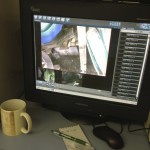
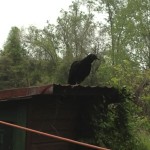
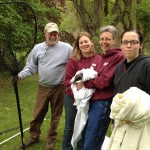
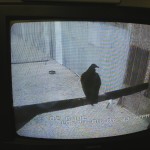


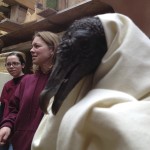
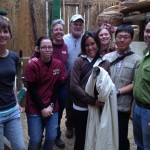
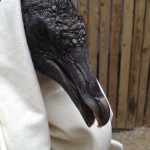
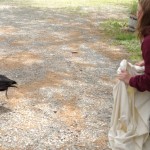
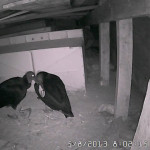
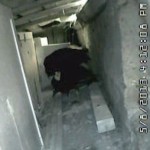
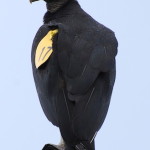
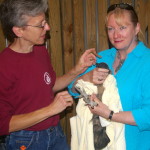

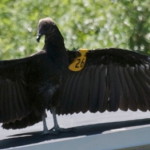
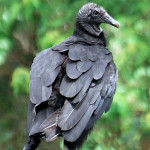
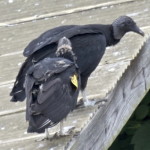
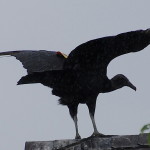
I have a black vulture with red tags on both wings on my game camera. I am unable to make out any numbers. This is in Frankford WV
I spotted a black vulture eating a dead rabbit in the middle of the road in Lebanon PA. Yellow Tag#00F
Oct 7th 2024
Saw 2 red tagged vultures in our woods, didn’t
see number.Outside of Shepherdstown, WV
Yellow tag Black Vulture 21E in Hershey, PA
87A south Coatesville alone
Vulture #33C has been coming to my property for over a year now. Chadwick circle Lancaster, Pa.
Yellow tag 379. Danville , PA
Tagged vulture number is either 621 or g21. Tags on both wings. In my yard in taneytown md on 4/24/2024. At 7am and again around 7 pm
Spotted black vulture with yellow shoulder tag #396 on Molineux Lane, East Fallowfield township, Chester County, Pa. With other black vultures eating a squirrel.04/04/2024
Black vulture at Conowingo Dam, MD, green tag on the right wing, “12H”.
Found 2 tagged vultures at Cecil County landfill in elkton, MD. Both green tags. One “93A” and the other “36H”. 36H has been at Cecil Co landfill for a year now.
I saw back vulture with red wing tag today while fishing dam 3 on Potomac river near Harper’s Ferry, Va.